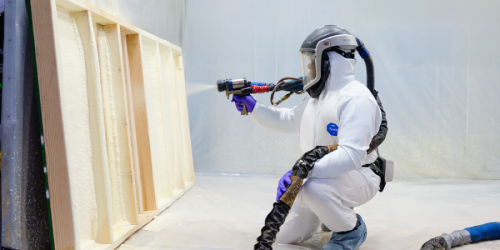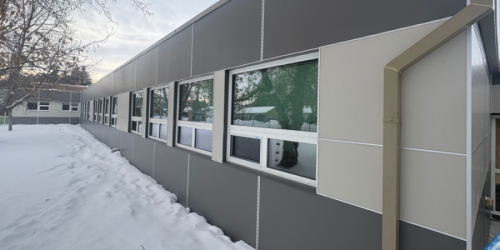Q&A Forums
Vapour Barrier Post New Topic | Post Reply
| Author | Comments |
|---|---|
|
Keith Prew
Posted: Jun 10, 2008 05:15 PM
|
Vapour Barrier
I have a question, hopefully someone will have some insight. In residential construction if Closed Cell foam is sprayed in the wall cavity, the foam acts as a vapour barrier. Is is necessary to apply a conventional poly vapour barrier to cover the face of the studs??? |
|
Posted: Jun 10, 2008 09:49 PM
|
most closed cell foam is a legitimate vapor barrier at two inches. for intstance ucsc (baysystems) has a permeance rating of .95 for two inches. .88 for three inches. .56 for 4 inches anything under 1.00 is considered a vapor barrier. check the material spec sheets for the permeance rating. most of this info is obtainable over the internet for each specic brand of foam. hope this helps |
|
Edward Brassington
Posted: Jun 11, 2008 10:36 PM
|
In my opinion closed cell spray foam is a vapour barrier when sprayed in excess of 1 5/8inch. However, the issue of vapour drive through wood is still debated. I recently sprayed a basement wall with three inches of foam. The building inspector insisted on a 6 mil vapour barrier because he was concerned about the vapour drive through the wood. However, the wood energy council of Canada has determined that the vapour permeance of 2x6 lumber is approximately 60 perms which is below the level that requires vapour barrier. The builder on this particular job installed the vapour barrier to comply, I believe it was later taken down. Another thought on this subject, if wood allows so much vapour or moisture to pass through it then no wooden boat would have ever floated long enough to cross the oceans of the world. |
|
Jim Coler
Posted: Jun 25, 2008 10:18 AM
|
The more important factor is air barrier. Over 95-99% of all moisture transfer occurs through air movement. To support this, a 1" square hole allows 30 quarts of water to pass through a 4x8 sheet of drywall. The same sheet of drywall without the 1" square hole only allows 1/3 of a quart. So, #1 is does your insulation act as an air barrier? If yes, then you've blocked most of the moisture transfer - most foams do. #2 - if you read the 2008 ICC code, the language was changed and the term "vapor barrier" no longer exists. It is termed "vapor retarder" because technically nothing is a complete "vapor barrier". Some things just slow the moisture vapor transmission down so slowly that it's hard to detect. Now there are classifications for different vapor retarders depending on your climate. The entire reason "vapor barriers" was that fiberglass allows air to pass through it and they needed an air barrier, but they didn't want to call it that because that would imply heat transfer too. So they put Kraft facing on and poly sheeting to slow down the air movement. The problem is that this air barrier has little to no insulation value and allows condensation to occur. on the front or back surface . So, to answer your question, closed cell does act as a class 1 vapor retarder under most circumstances and does not need an additional vapor retarder/barrier according to the ICC 2008. |





























